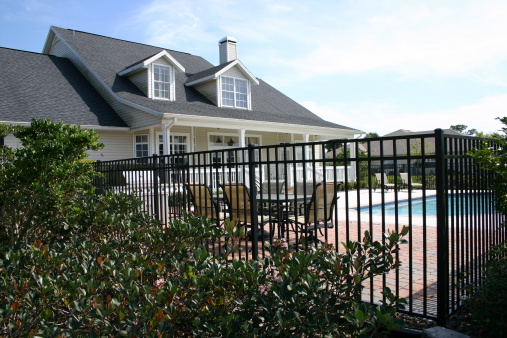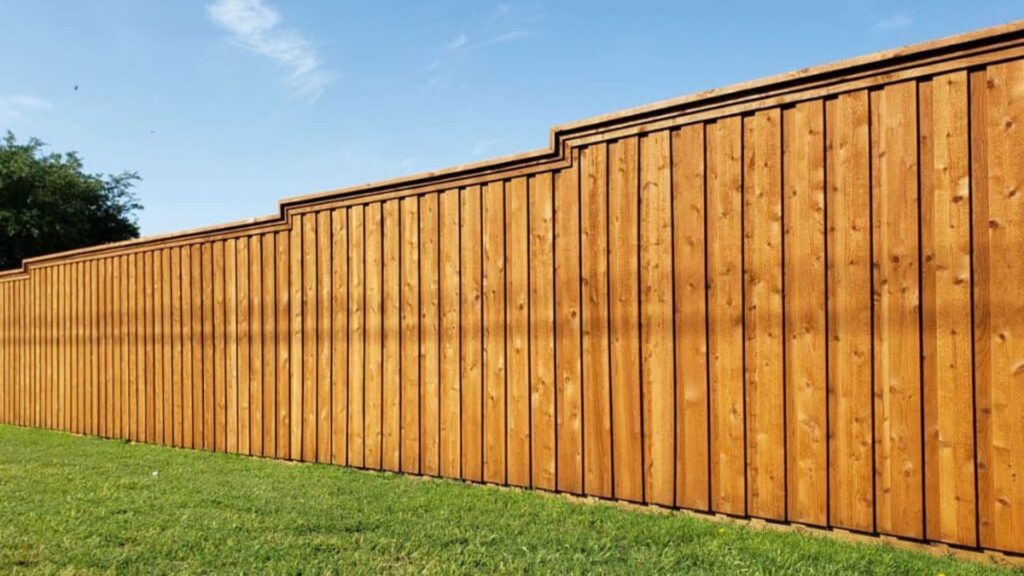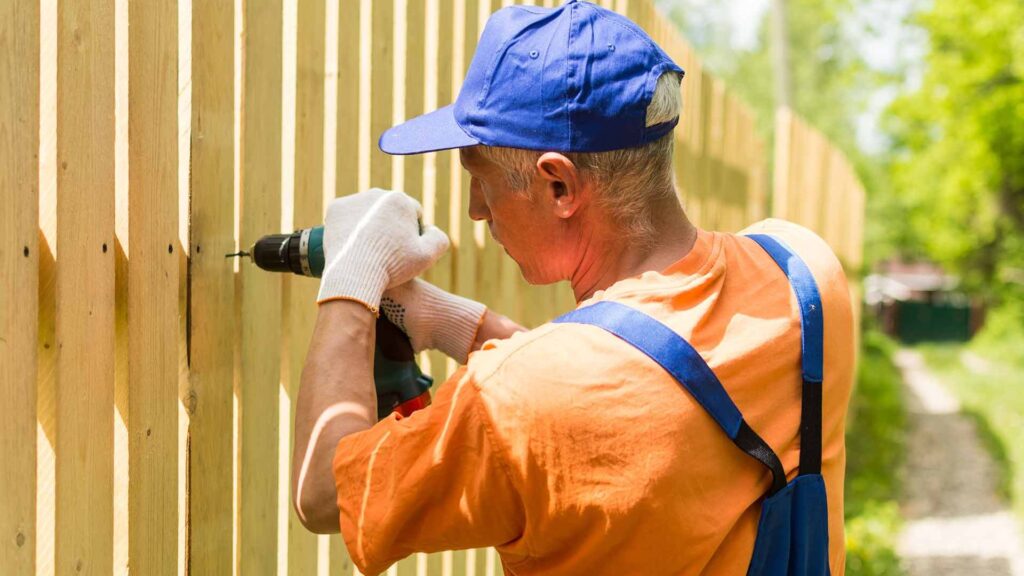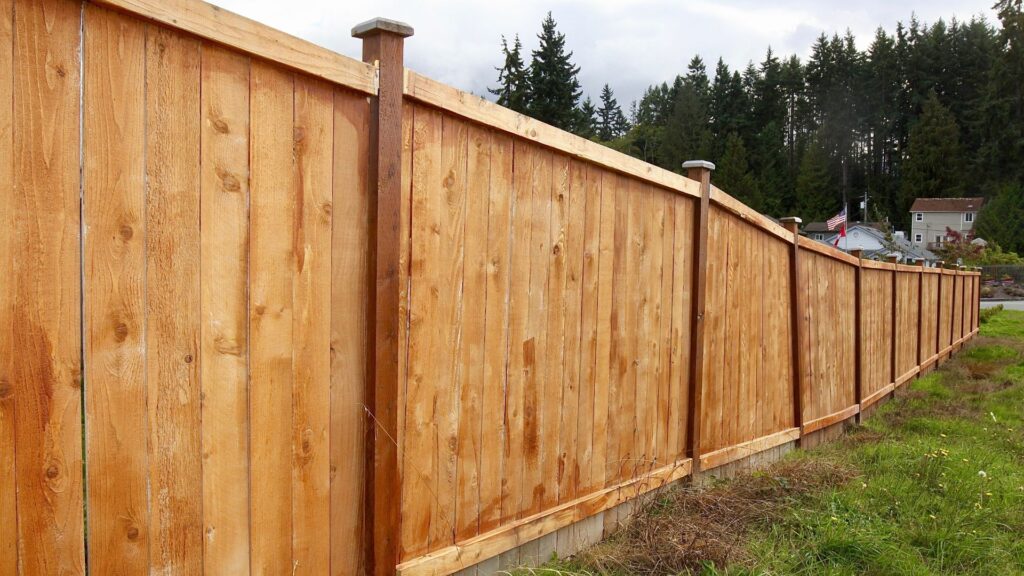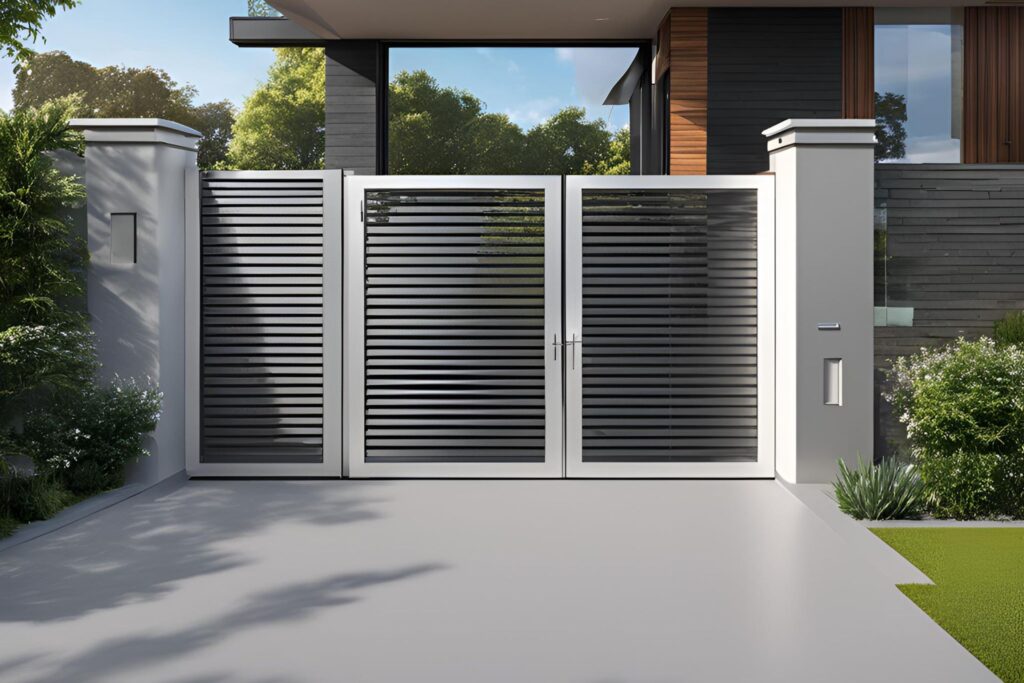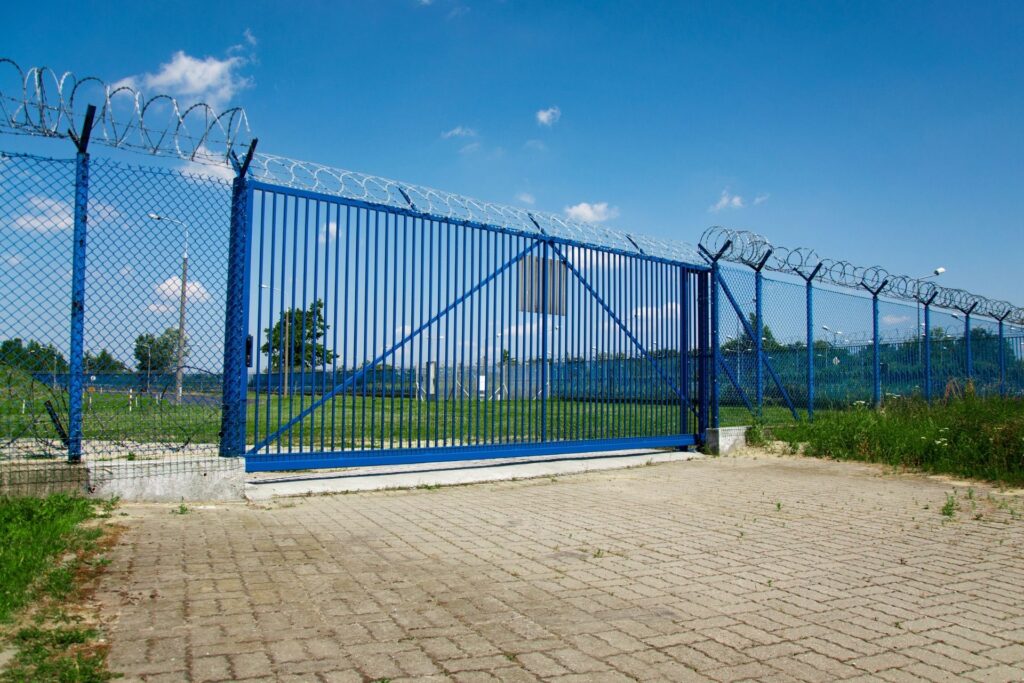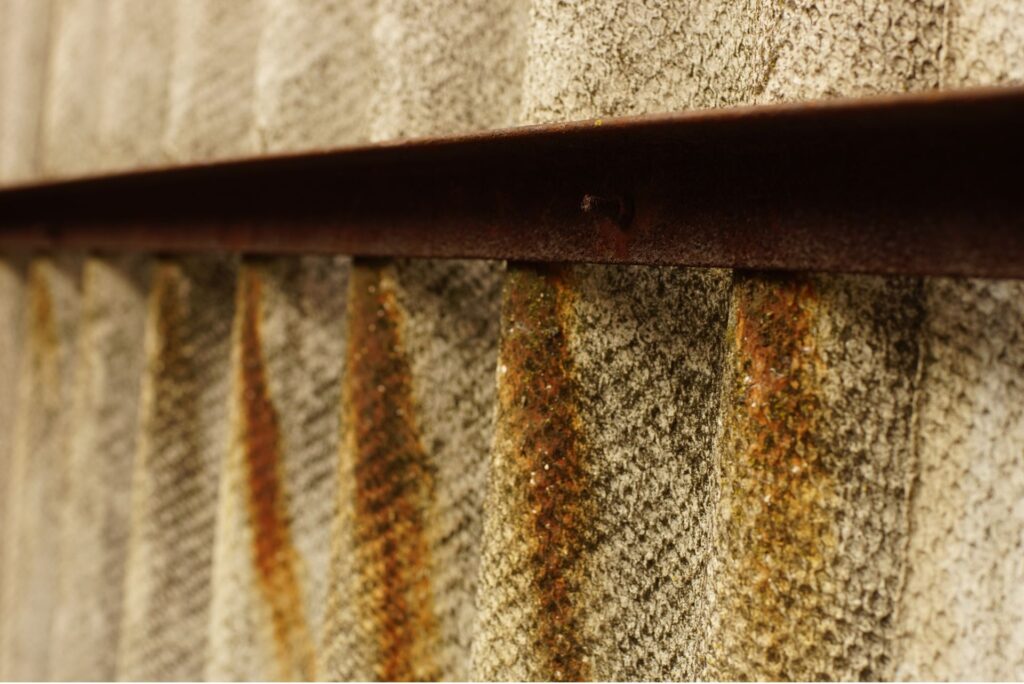Aluminum and wood are two of the most popular materials used for fencing. Homeowners looking to install a fence often wonder which material is cheaper, aluminum or wood. The answer is not straightforward and depends on various factors, including upfront costs, material quality and durability, installation process, maintenance requirements, and aesthetics.
Comparing the two materials, wood is generally cheaper than aluminum in terms of upfront costs. On average, a wooden fence can cost between $1600 and $4000 depending on the type, while an aluminum fence can range between $2000 and $5000. However, the upfront cost is not the only factor to consider when deciding between the two materials. Material quality and durability, maintenance requirements, and installation process can all impact the total cost of ownership over the life of the fence.
Key Takeaways
- The upfront cost of a wooden fence is generally cheaper than aluminum, but other factors impact the total cost of ownership over the life of the fence.
- Aluminum fences are more durable and require less maintenance than wooden fences, which can result in long-term cost savings.
- Homeowners should consider various factors, including material quality, installation process, and aesthetics, when deciding between an aluminum or wood fence.
Comparing Aluminum and Wood Fences
When it comes to choosing between aluminum and wood fences, there are a few key differences to consider. Both materials have their own unique advantages and disadvantages, and the choice ultimately comes down to personal preference and specific needs.
Cost
One of the most significant factors to consider when choosing between aluminum and wood fences is cost. While wood fences tend to have a lower upfront cost than aluminum fences, they can be more expensive in the long run due to maintenance costs. On average, a wooden fence can cost between $1600 and $4000 depending on the type, while an aluminum fence can range between $2000 and $5000 [^1][^2]. However, aluminum fences require little to no maintenance, while wood fences require regular upkeep, such as staining or painting, to prevent rot, decay, and insect damage [^2][^3]. Over time, the cost of maintaining a wood fence can add up, making aluminum fences the more cost-effective option in the long run.
Durability
Another factor to consider is durability. Aluminum fences are incredibly durable, lightweight, and resistant to rust, rot, and disintegration. They also hold their color much better than comparable wood fences, which can fade over time [^3]. On the other hand, wood fences are susceptible to damage from weather, insects, and other external factors, and may require repairs or replacement over time [^2][^3]. While wood fences can last for many years with proper maintenance, aluminum fences are generally considered to be more durable and long-lasting.
Installation
Installation is another important factor to consider when choosing between aluminum and wood fences. Aluminum fences are generally installed in uniform panels, which makes for greater ease and faster installs. They also get installed more quickly, with smaller teams, and with less opportunity for injury [^4]. Wood fences, on the other hand, require more labor-intensive installation, as each board must be individually installed and nailed in place [^2]. This can make wood fences more time-consuming and expensive to install than aluminum fences.
Overall, the choice between aluminum and wood fences ultimately comes down to personal preference and specific needs. While wood fences may have a lower upfront cost, they can be more expensive in the long run due to maintenance costs. Aluminum fences, on the other hand, are more durable, low-maintenance, and easier to install.
Material Quality and Durability
When it comes to material quality and durability, both wood and aluminum fences have their pros and cons.
Wood Fences Durability
Wood fences offer a natural aesthetic that many homeowners find appealing. However, they require regular maintenance to prevent rot, warping, and termite damage. Wood fences are also prone to staining and may not hold up well in harsh weather conditions.
Aluminum Fences Durability
Compared to wood, aluminum fences are incredibly durable and long-lasting. They are resistant to rot, warping, and termite damage. Aluminum fences are also strong and can withstand harsh weather conditions. Additionally, they require minimal maintenance and do not stain easily.
Overall, while wood fences may offer a warm, natural aesthetic, aluminum fences are the more durable and long-lasting option. They are resistant to damage and hold up well in harsh weather conditions, making them ideal for homeowners who want a fence that will last for years to come.
Cost Analysis
When it comes to choosing between an aluminum fence and a wood fence, cost is an important factor to consider. In this section, we will analyze the costs associated with both types of fences.
Initial Costs
The initial cost of an aluminum fence is generally higher than that of a wood fence. According to Architect Design Welding, the cost of a wooden fence can range between $1600 and $4000, while an aluminum fence can range between $2000 and $5000. However, it’s important to note that the cost of a fence depends on various factors, such as the size of the fence, the type of material used, and the complexity of the installation.
Long-Term Costs
While the initial cost of an aluminum fence may be higher, it can be more cost-effective in the long run. Aluminum fences require little to no maintenance, which means that you won’t have to spend money on painting, staining, or replacing boards. On the other hand, wooden fences require regular maintenance, such as painting, staining, and replacing boards, which can add up to significant long-term costs.
According to Aluminum Fences Direct, an aluminum fence won’t cost you much once it goes up, which can represent significant savings over a traditional wood fence. Furthermore, once the fence goes in, an aluminum fence doesn’t need to be painted, stained or have boards replaced, which keeps those long-term costs down.
In addition, good quality aluminum fencing lasts longer than wooden fencing and requires less maintenance, ultimately saving time and money. As HomePlus NZ notes, good quality aluminum fencing will pay off in the long term, despite being more expensive than wooden fencing.
In summary, while the initial cost of an aluminum fence may be higher than that of a wooden fence, it can be more cost-effective in the long run due to its low maintenance requirements.
Installation Process
When it comes to the installation process, both wood and aluminum fences have their unique requirements.
Wood Fence Installation
Wood fence installation typically involves digging holes for the fence posts, setting the posts in concrete, and attaching the fence panels to the posts. This process requires a lot of manual labor, including digging and mixing concrete. The installation process can take several days, depending on the size of the fence and the experience of the installer.
Wood fence installation requires a variety of tools, including post hole diggers, shovels, levels, measuring tape, circular saws, and drills. Additionally, wood fences may require additional maintenance over time, such as staining or painting to prevent rotting or warping.
Aluminum Fence Installation
Aluminum fence installation is generally easier and quicker than wood fence installation. It typically involves assembling pre-fabricated fence panels and attaching them to aluminum posts. The installation process can be completed in a day or two, depending on the size of the fence and the experience of the installer.
Aluminum fence installation requires a few specialized tools, including a drill and a saw for cutting the fence panels to size. The aluminum material is also lightweight, making it easier to work with during the installation process. Additionally, aluminum fences require minimal maintenance over time, as they do not rust or rot like wood fences.
In terms of labor costs, wood fence installation may be more expensive due to the amount of manual labor required. However, the cost of installation may vary depending on the location and experience of the installer.
Overall, while both wood and aluminum fences require a certain level of skill and tools to install, aluminum fences are generally easier and quicker to install than wood fences.
Maintenance Requirements
When it comes to maintenance, aluminum fences require much less ongoing maintenance than wood fences.
Maintenance of Wood Fences
Wood fences require regular maintenance to keep them looking good and to prevent them from rotting or warping. This maintenance includes things like staining, painting, and sealing the wood. Without proper maintenance, wood fences can quickly deteriorate and require costly repairs or replacement.
Wood fences also need to be cleaned regularly to prevent dirt and debris from building up on them. This can be done with a hose or a pressure washer, but care should be taken not to damage the wood.
Maintenance of Aluminum Fences
Aluminum fences, on the other hand, require very little maintenance. They do not need to be painted or stained and they do not rot or warp like wood fences.
Aluminum fences can be cleaned with a hose or pressure washer, but this is not necessary as often as with wood fences. The only ongoing maintenance required for aluminum fences is to check the fasteners periodically to ensure they are tight and secure.
Overall, aluminum fences are a much lower maintenance option than wood fences. They require little to no ongoing maintenance and do not require the regular repairs and painting that wood fences do.
Aesthetics and Style Options
When it comes to the aesthetics and style options of fencing, both wood and aluminum fences have their unique characteristics.
Styles of Wood Fences
Wood fences offer a classic and natural look that complements well with any landscape. They come in various styles, such as picket, split rail, privacy, and shadowbox. Picket fences are the most common style and are characterized by evenly spaced vertical boards with pointed or round tops. Split rail fences are a rustic option that uses horizontal rails and vertical posts. Privacy fences provide complete privacy and are designed with overlapping vertical boards. Shadowbox fences are similar to privacy fences but with a more decorative design that alternates the position of the boards on each side of the fence.
Wood fences can be stained or painted in various colors to match the landscape and personal preferences. Common colors include natural wood, white, brown, and gray. The finishes can be glossy or matte, depending on the desired look.
Styles of Aluminum Fences
Aluminum fences are known for their modern and sleek appearance. They come in various styles, such as flat top, pressed spear, and staggered spear. Flat top fences have a simple design with evenly spaced vertical pickets. Pressed spear fences have a decorative design with spear-shaped pickets at the top of each vertical post. Staggered spear fences have a similar design to pressed spear fences but with the pickets alternating in height.
Aluminum fences come in a variety of colors, including black, white, bronze, and green. The finishes can be glossy or matte, depending on the desired look. Some manufacturers offer custom colors and finishes to match specific landscape and personal preferences.
Overall, both wood and aluminum fences offer a range of styles and colors to match any landscape and personal preferences. It’s important to consider the style and color of the fence in relation to the surrounding landscape and the overall aesthetic of the property.
Security and Privacy Features
Security of Wood Fences
Wood fences offer a classic look and feel, but they may not be the most secure option. Wood fences are susceptible to damage from weather, pests, and other external factors, which can compromise their structural integrity. Wood fences are also relatively easy to climb, making them less secure than other fencing options.
Security of Aluminum Fences
Aluminum fences are known for their durability and strength, making them a secure option for property owners. They are resistant to weather and pests, which helps to maintain their structural integrity over time. Aluminum fences are also difficult to climb, making them a secure option for those who prioritize security.
When it comes to privacy, wood fences are often the preferred option. They can be built to any height and designed without gaps, providing a solid barrier between your property and the outside world. On the other hand, aluminum fences offer less privacy due to their design, which typically includes gaps between the pickets.
Ultimately, the choice between wood and aluminum fencing depends on the specific needs of the property owner. Those who prioritize privacy may prefer wood fences, while those who prioritize security may prefer aluminum fences. It is important to consider factors such as the property line, budget, and aesthetic preferences when making a decision.
In summary, both wood and aluminum fences have their own unique security and privacy features. Property owners should carefully evaluate their needs and priorities before deciding which option is best for their property.
Pros and Cons
Pros and Cons of Wood Fences
Wood fences have been a popular choice for many years. They offer a classic look and come in a variety of styles. However, they also have some drawbacks. Here are the pros and cons of wood fences:
Pros
- Lower up-front cost: Wood fences are generally less expensive than aluminum fences.
- Many design options: Wood fences can be customized to fit any style or design.
- Easy to work with: Wood is a relatively easy material to work with, making repairs and modifications easier.
Cons
- Require maintenance: Wood fences need to be stained or painted regularly to maintain their appearance and prevent rotting.
- Not as strong: Wood fences are not as strong as aluminum fences and can bend or break under pressure.
- Not as durable: Wood fences are more susceptible to weather damage and can rot or warp over time.
Pros and Cons of Aluminum Fences
Aluminum fences have become more popular in recent years due to their sleek appearance and low maintenance requirements. However, they also have some drawbacks. Here are the pros and cons of aluminum fences:
Pros
- Strong and durable: Aluminum fences are stronger than wood fences and can withstand more pressure without bending or breaking.
- Low maintenance: Aluminum fences do not require painting or staining, making them a low-maintenance option.
- Resistant to weather damage: Aluminum fences are resistant to rust, rot, and weather damage, making them a good option for areas with harsh weather conditions.
Cons
- Higher up-front cost: Aluminum fences are generally more expensive than wood fences.
- Limited design options: Aluminum fences come in a limited range of styles and designs.
- Harder to work with: Aluminum is a harder material to work with, making repairs or modifications more difficult.
In terms of value, aluminum fences may be a better option in the long run due to their durability and low maintenance requirements. However, the choice between wood and aluminum fences ultimately depends on individual needs, preferences, and budget.
Conclusion
When it comes to choosing between an aluminum fence and a wood fence, there are several factors to consider. Both types of fences have their own advantages and disadvantages, and it ultimately comes down to the individual’s needs and preferences.
While a wood fence may be more affordable upfront, it requires regular maintenance to prevent rot and insect damage, which can add up over time. On the other hand, an aluminum fence is lightweight, durable, and requires little to no maintenance, making it a cost-effective option for residential properties.
In terms of aesthetics, both wood and aluminum fences have their own unique look. Wood fences offer a warm, natural aesthetic and can be customized to fit the individual’s style. However, aluminum fences come in a variety of styles and colors, providing a sleek and modern look that can complement any home.
To make an informed decision, it is important to consider the specific needs and preferences of the individual. If affordability is a top priority, a wood fence may be the better option. However, if durability, low maintenance, and a modern aesthetic are important, an aluminum fence may be the better choice.
Overall, it is important to weigh the pros and cons of each type of fence and choose the one that best fits the individual’s needs and budget.
Frequently Asked Questions
Is aluminum fencing a cost-effective alternative to wood fencing?
Yes, aluminum fencing can be a cost-effective alternative to wood fencing. While the initial cost of aluminum fencing may be higher than that of wood fencing, the long-term savings can make it a more cost-effective option. Aluminum fencing requires less maintenance and has a longer lifespan than wood fencing, which can save homeowners money in the long run.
What are the benefits of installing an aluminum fence?
There are several benefits to installing an aluminum fence. Aluminum fencing is durable, low-maintenance, and resistant to rust and corrosion. It is also lightweight and easy to install, making it a popular choice for DIY projects. Additionally, aluminum fencing comes in a variety of styles and colors, making it easy to find a design that complements any home.
How does the cost of an aluminum fence compare to other fencing options?
The cost of an aluminum fence can vary depending on the size of the fence, the style, and the manufacturer. However, in general, aluminum fencing is more expensive than some other fencing options, such as chain-link or vinyl fencing. However, aluminum fencing is often less expensive than wrought iron fencing, while still providing a similar look and level of durability.
What are the long-term cost savings of an aluminum fence?
The long-term cost savings of an aluminum fence are significant. Aluminum fencing requires little maintenance and has a longer lifespan than wood fencing, which can save homeowners money on repairs and replacements. Additionally, aluminum fencing is resistant to rust and corrosion, which means it will not need to be replaced due to weather damage.
What are some considerations when choosing between wood and aluminum fencing?
When choosing between wood and aluminum fencing, homeowners should consider factors such as cost, maintenance, durability, and design. While wood fencing may be less expensive upfront, it requires more maintenance and has a shorter lifespan than aluminum fencing. Additionally, aluminum fencing comes in a variety of styles and colors, making it easy to find a design that complements any home.
What are some common misconceptions about aluminum fencing?
One common misconception about aluminum fencing is that it is not as strong as other fencing materials, such as wrought iron or steel. However, aluminum fencing is actually very durable and can withstand harsh weather conditions. Another misconception is that aluminum fencing is difficult to install. In reality, aluminum fencing is lightweight and easy to install, making it a popular choice for DIY projects.
About the Author:
Mike Veail is a recognized digital marketing expert with over 6 years of experience in helping tradespeople and small businesses thrive online. A former quantity surveyor, Mike combines deep industry knowledge with hands-on expertise in SEO and Google Ads. His marketing strategies are tailored to the specific needs of the trades sector, helping businesses increase visibility and generate more leads through proven, ethical methods.
Mike has successfully partnered with numerous companies, establishing a track record of delivering measurable results. His work has been featured across various platforms that showcase his expertise in lead generation and online marketing for the trades sector.
Learn more about Mike's experience and services at https://theleadguy.online or follow him on social media:

